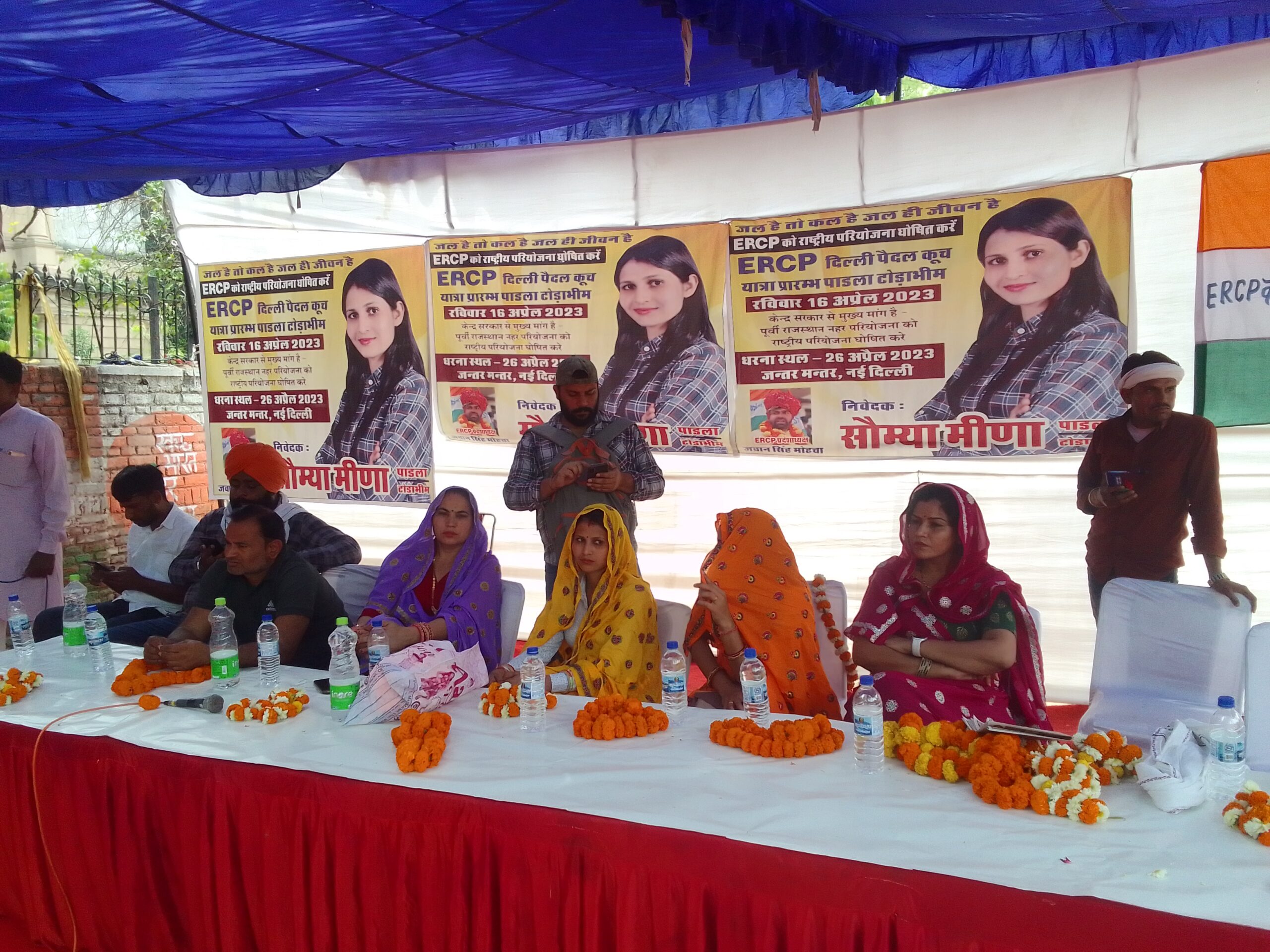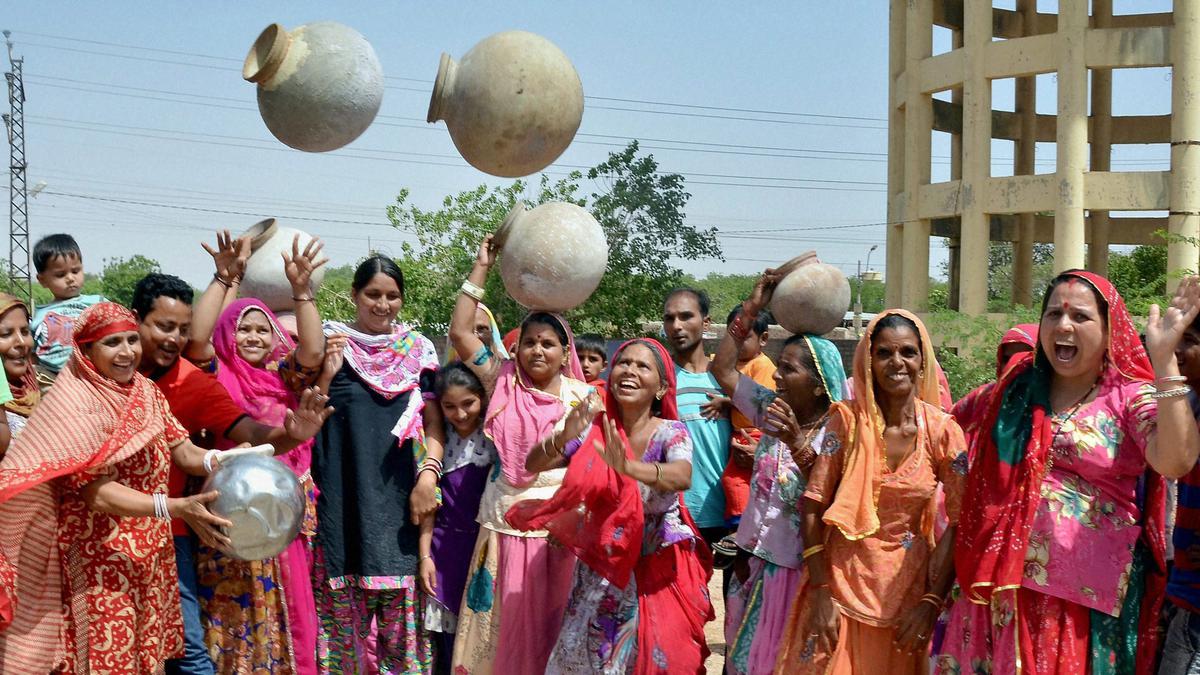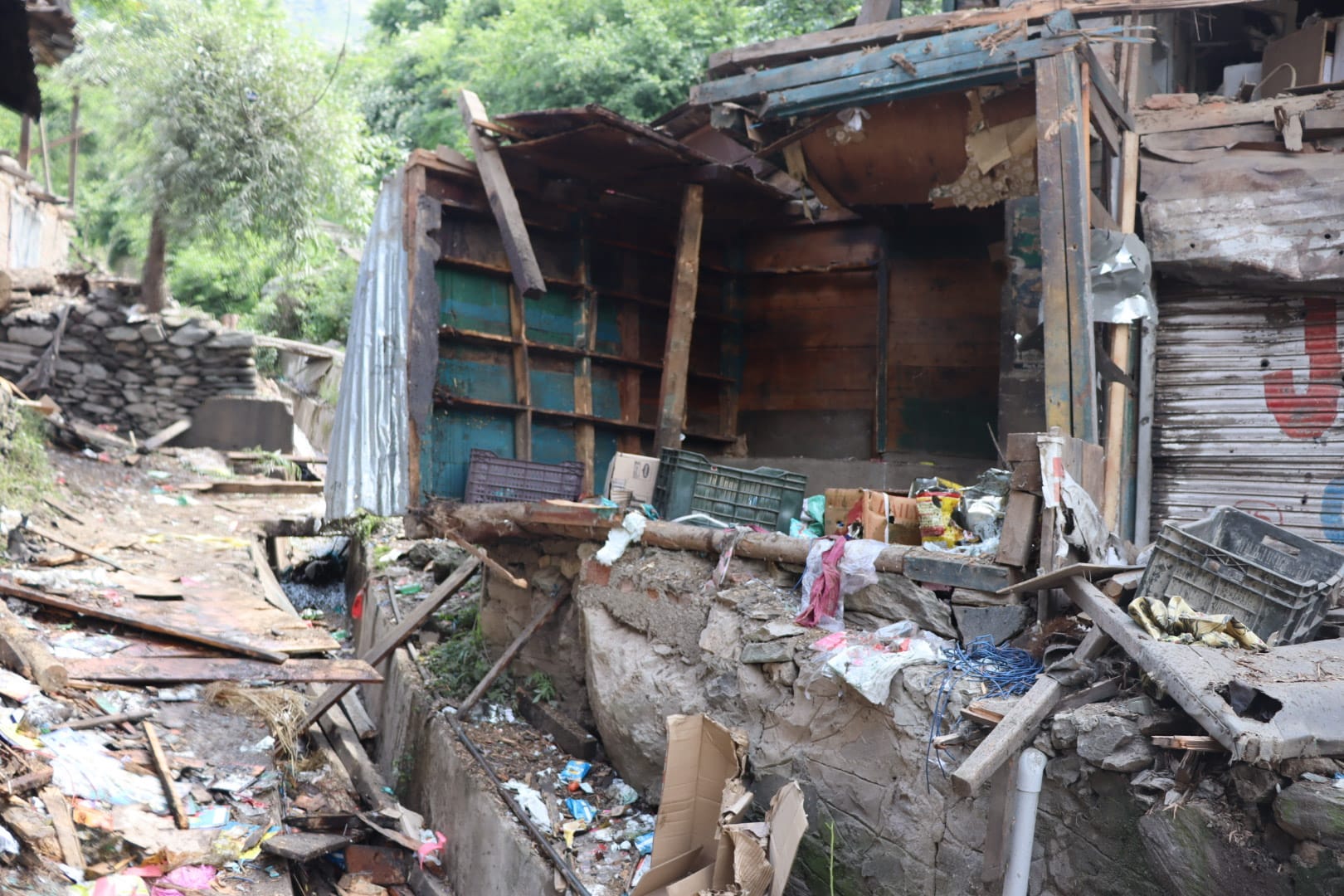Water, an elemental force intertwined with human history, culture, and survival, remains a dynamic lens through which we examine our connection to the environment and society. In this context, the concept of water transcends its physicality, becoming a metaphor, a symbol, and a catalyst for societal change.
Global water crises primarily affects women who must fulfil the roles of both childbearing and water procurer. This is especially true in areas with low economic status. Due to the labor-intensive task of retrieving water, women find it more difficult to participate in other economic activities, which leads to a widening gender gap. As a result, women become indispensable in the continuous struggle to protect community access to water, and women’s rights are inextricably linked to water rights, particularly in countries like India that rely heavily on agriculture.
Due to the labor-intensive task of retrieving water, women find it more difficult to participate in other economic activities, which leads to a widening gender gap.
This article delves into the intricate relationship between water, gender, and grassroots movements, showcasing the compelling example of the Eastern Rajasthan Canal Project (ERCP) protest in South Eastern Rajasthan.
What is the ERCP?
Rajasthan, spanning approximately 10.4% of the total geographical area, 5.5% of the population, 19% of livestock, and 14% of cultivable land, has only 1.16% of the country’s surface water and 1.72% of groundwater. In terms of groundwater status, only 50 are considered safe out of 295 blocks. Therefore, the development of a multi-purpose irrigation and drinking water project is essential for the region’s progress (Sectoral Portal, n.d.).
The Eastern Rajasthan Canal Project (ERCP) has been devised to harness surplus water from the Southern Rajasthan Rivers and redirect it to the deficit basins in South Eastern Rajasthan. This ambitious scheme aims to cater to the drinking, irrigation, and industrial water requirements of 13 districts. It covers 23.67% of the state’s total area and serves 41.13% of its population. Elevating the ERCP project to national project status is a crucial step in securing the necessary funds and budget from central government to initiate and complete the project successfully. (Seventeenth Series, Vol. X, Fifth Session, 2021/1942 (Saka), 2021). This status can also provide a framework for better coordination among different government departments and agencies involved in the project.
The DPR (Detailed Project Report) was developed by Rajasthan River Basin Authority. After presenting the DPR, the central government reviewed the plan. Since then, the project has been under consideration for funding by the Central Water Commission (Yadav, 2023).
Protests around the ERCP
In response to the critical need, a grassroots movement emerged, demanding national recognition for the ERCP project and the inclusion of various dams within its Detailed Project Report (DPR).
Initially, Kirodi Lal Meena, a Rajya Sabha MP, played an important role in mobilising and raising awareness for the Eastern Rajasthan Canal Project (ERCP). He planned a significant event on August 2020 in Dausa district, estimating a gathering of 2 lakh people in Jaipur followed by a march to Jaipur with 75,000 people carrying the national flag initiating a water revolution. (Meena, 2020).
In an era marked by traditional gender hierarchies, it was men who predominantly occupied positions of influence and authority within this movement.
But the movement’s male-centric composition, rooted in entrenched gender roles and societal norms, underscored the inherent imbalances in participation and leadership. In an era marked by traditional gender hierarchies, it was men who predominantly occupied positions of influence and authority within this movement. This limited the equal participation of women and marginalised gender identities, reinforcing and perpetuating the gender disparities of the time.
However, as the movement unfolded, it found itself at odds with the prevailing societal norms, which were undergoing significant transformations. The movement was unable to adapt and engage effectively with the changing social landscape. As a result, it began to wither and lose momentum, due to lack of financial, logistical, and emotional support. The absence of assistance, both from within and from external stakeholders, served as a significant impediment to the movement’s progress.
As the movement encountered obstacles and encountered roadblocks, a significant transformation unfolded. Women, particularly those hailing from agrarian backgrounds, came forth as not just supporters but as catalysts for change, ascending to leadership positions within the movement. Their involvement proved instrumental for the movement.
Women in the protests
FII approached a key member of the Sanyukt Morcha, to gain deeper insights. Subsequently, FII joined their statewide ‘yatra,’ specifically at the Bandikui in the Dausa district. This immersive experience allowed us to witness firsthand the multifaceted aspects of this socio-political movement.
This immersive experience allowed us to witness firsthand the multifaceted aspects of this socio-political movement.
Upon our arrival at the designated ‘sabhasthal,’ an intriguing sociocultural landscape unfolded before us. We observed a striking division, where men and women congregated separately. The men were seated comfortably on ‘khats‘ and chairs, basking in their prominence, while the women, veiled with ‘ghunghat,’ occupied a large mat on the ground. This visible arrangement symbolised the deeply rooted societal bias, implicitly suggesting that in these conversations, the role of leadership and decision-making was predominantly reserved for men.
However, it was in this context that the indispensable role of educated women leaders came to the fore. These women acted as crucial bridges, challenging and transforming the prevailing gender dynamics. One such remarkable figure was Rajeshwari Meena, the head of the women’s wing of the Sanyukt Morcha. Our initial impression of Rajeshwari Meena was striking. She disembarked from a vehicle, clad in traditional Rajasthani attire, exuding an air of poise and confidence. Her intense gaze and unwavering demeanor gave her an aura of self-assuredness. Rajeshwari Meena moved purposefully towards a group of 30-35 women who were eagerly awaiting her arrival.
Despite her seemingly unremarkable appearance, with no veil to obscure her face, Rajeshwari Meena swiftly became the focal point of attention, sparking discussions and captivating the audience. Whispers and murmurs began to circulate within the gathering, as those present exchanged observations about the woman in the distinct yellow ‘odhni’ who had prominently displayed the banner of the Eastern Rajasthan Canal Project (ERCP) during Rahul Gandhi’s gathering (Tiwari, 2022).
Rajeshwari began conversing with the women in their native dialect, gradually establishing a rapport and comfort zone with them. As the ‘sabha’ (meeting) commenced, a male member of the Morcha introduced the agenda and sought opinions from the attendees. Initially, the women in attendance remained reticent, refraining from active participation in the conversation. It was Rajeshwari who changed the narrative by addressing the gathering in the local dialect. Her voice resonated with assertiveness, and she implored, ‘I want to ask all the ladies here. Do you have water-related issues or not?’ With this query, the women began to voice their concerns, emphasising the urgency of bringing water from rivers to their fields through canals and dams, a core objective of the ERCP project. She further elucidated that despite the project’s inception in 2017, it had yet to make significant progress. The Sanyukt Morcha, under the leadership of Jawan Singh Mohcha, the state president, had embarked on a mission to raise awareness on the matter.
Rajeshwari Meena emphasised that the issue was not just the concern of this organisation but a collective endeavor leads to the need of transcending religious and communal divides.
Rajeshwari Meena emphasised that the issue was not just the concern of this organisation but a collective endeavor leads to the need of transcending religious and communal divides. She encouraged them to seek answers from their elected representatives. Her impassioned speech galvanised the gathering, particularly the women who, feeling empowered by the presence of a relatable leader, shared their concerns openly.
This experience underscored the transformative potential of educated women leaders in reshaping the gender dynamics within grassroots movements, where women often faced societal barriers that hindered their active participation in public discourse.
Does protest impacts position of women in society too?
We discussed the protest’s effects on women’s status in society during our interview with Hema Mehar, the spouse of Jawan Singh Mohcha, a prominent figure in the Eastern Rajasthan Canal Project (ERCP) protest. Hema Mehar, a woman rooted in the rural environment, provided insight into the movement’s revolutionary impact on the roles and attitudes of women in the local area. While asked about the protest’s effects on society, She highlighted the dynamic change in roles that took place in her family as a result of her husband’s active involvement in the state-level demonstration. Hema took on to manage the farm and represent the local resistance at the same time. This change signalled a break from conventional gender norms and demonstrated how flexible and resilient women can be when faced with changes in society.
We also explored the viewpoints of Sonu Kumari Yadav, a postgraduate student from Eastern Rajasthan. Sonu asserts that these female leaders are encouraging young girls to speak out more about their issues in addition to spearheading a movement. She pointed out that mothers and grandmothers, whose views have traditionally been less important in homes, now wish for their daughters to have the same confidence and assertiveness as the female leaders who have emerged from similar backgrounds.

The ERCP protest emerges not only as a movement for water rights but also as a catalyst for a transformative shift in gender dynamics and shaping shared desires of women to challenge traditional roles and amplify their voices in the pursuit of societal change.
The Eastern Rajasthan Canal Project (ERCP) protest, which was sparked by the urgent need for water resources, surpasses its initial objectives and turns into a potent tool for social change, especially in terms of women’s empowerment and the questioning of gender norms. The ERCP protest serves as an example of the complex relationship between water, gender, and grassroots movements. This relationship reveals a complex dynamic in which the struggle for gender equality and water rights are intertwined.
References:
Meena, P. (2020, July 30). Rajasthan Politics: भाजपा सांसद किरोड़ी लाल ERCP को लेकर 9 अगस्त को दौसा से भरेंगे हुंकार, जलक्रांति पोस्टर का किया विमोचन. Hindustan. https://www.livehindustan.com/rajasthan/story-rajasthan-politics-bjp-mp-kirori-lal-meena-targets-cm-ashok-gehlot-over-ercp-6864777.html
Seventeenth Series, Vol. X, Fifth Session, 2021/1942 (Saka). (2021, February 5). https://loksabhadocs.nic.in/debatestextmk/17/V/05.02.2021U.pdf
Tiwari, K. (2022, December 15). राहुल गांधी को ERCP का बैनर दिखाती यह महिला कौन, आखिर क्यों चर्चा में है ये तस्वीर. Navbharat Times. https://navbharattimes.indiatimes.com/state/rajasthan/dausa/eastern-canal-project-rajasthan-banner-carrying-by-women-in-rahul-gandhi-bharat-jodo-yatra/articleshow/96234212.cms
Yadav, R. (2023, October 18). ERCP: Water, Women and Society in Rajashan. Prayas Magazine. https://www.prayasmagazine.com/post/_ercp
Sectoral Portal. (n.d.). Water.rajasthan.gov.in. Retrieved November 17, 2023, from https://water.rajasthan.gov.in/home
About the author(s)
Rahul is a PhD candidate at the Department of Humanities and Social Sciences, MNIT Jaipur. His research focuses on democratic decentralization, local governance, and political-administrative dichotomies. He is also interested in contemporary Indian socio-political thought and alternate histories, particularly those highlighting social and spatial marginality. Rahul holds a master's degree from the Faculty of Social Sciences at South Asian University. He has a deep passion for Hindi literature and enjoys discussing it at length.










